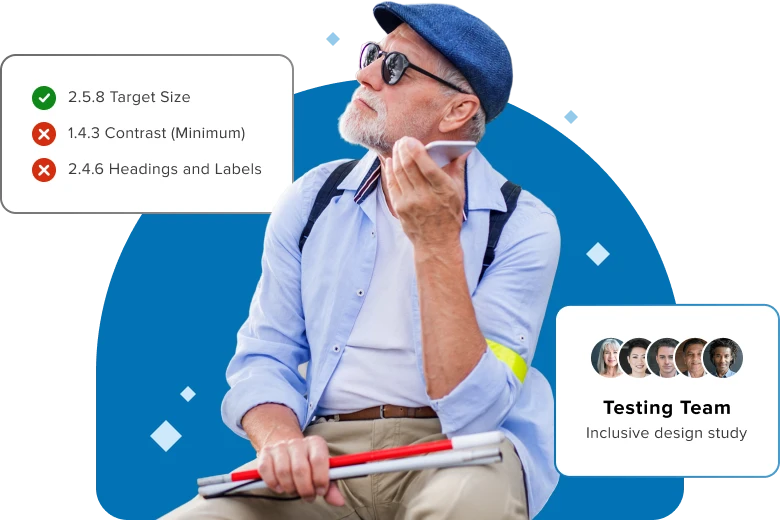WCAG 2.2
Fast Feedback to Assess, Test and Conform
Test your digital properties’ conformance with the latest World Content Accessibility Guidelines and deliver inclusive experiences for all users.

The Impact of Web Content Accessibility Guidelines (WCAG) 2.2
Established in 1999, WCAG is the first international standard for digital accessibility. An arm of the internet’s international standards organization (World Wide Web Consortium, or W3C), the Web Accessibility Initiative (WAI) published WCAG to ensure any public digital platform is available and accessible to everyone.
The importance of WCAG has increased significantly over the years as governments create and expand legislations like the ADA in the US and EAA in Europe to include accessibility to digital properties for consumers with disabilities. The WCAG 2.2 is a valuable reference point for brands to understand how to conform with these accessibility laws to avoid fines and other negative consequences.
Testing the accessibility of digital properties is a unique skill most companies do not own in-house. As development teams move to agile environments it becomes more and more difficult to ensure ongoing conformance.
Testing for WCAG 2.2 with Applause
Applause provides accessibility experts who understand the legislation around accessibility and know how to translate WCAG 2.2 guidelines into actionable recommendations. The insights provided allow your development teams to build and maintain accessible digital properties.
Brands who partner with Applause for an Accessibility Assessment will receive:
- Evaluation of conformity to WCAG 2.2 including the methodology by which Applause used to evaluate the digital property
- Detailed Results of the Evaluation including a reference to WCAG section that failed as well as screenshots and video showing the failure
- Recommended Remediation Steps for company to take in order to be in conformance with WCAG 2.2
“…they’ve got real people with real disabilities. So it’s not an engineer sitting in a room who sort of understands how to use this assistive technology, who thinks they know how to use the product but doesn’t actually do it in their daily lives.”
Ready to Get Started?
We’d love to help you deliver the Applause-worthy digital experiences your customers demand.
- The world’s largest community of QA professionals, UX researchers, payment and accessibility specialists, automation developers, SDETs, engineers and other trained testers
- Access to millions of real devices and configurations in over 200 countries and territories
- An experienced team to monitor testing, provide guidance for continuous improvement, and deliver actionable reports
- 24/7/365 global availability
- Seamless integration with existing Agile and CI/CD workflows
- Highly secure and protected approach that conforms to information security best practices
- Deep expertise across industries and use cases
Dive Deeper Into Digital Quality
From customer stories to expert insights, our Resource Center offers a deeper look at how we approach digital quality.